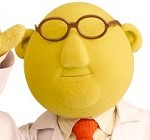The 50th Anniversary of the Division is approaching. Are there any volunteers to write about the history of our second twenty-five year period? If so, please contact one of the website committee members.
The Division of Nuclear Chemistry and Technology’s First Twenty-five Years
written by Elliot S. Pierce in 1990
Conception of the highly successful Division of Nuclear Chemistry and Technology (DNCT or, officially, NUCL) took place in the ACS Division of Industrial and Engineering Chemistry (I&EC). In 1955 the ACS Award in Nuclear Applications in Chemistry was launched, and in 1957 the I&EC Subdivision of Nuclear Chemistry and Technology was formed. All told, I&EC has spawned 12 ACS Divisions!
While limited by the space of these pages, it is fitting to recognize the six principal genitors of the independent NUCL. In 1962, under Subdivision Chairman Joseph Martin, formal steps were begun to seek Divisional status. Morton Smutz and Bernice Paige provided vast energy and leadership, rewarded at the Fall 1963 ACS Meeting when, in a close vote, the Council granted the customary status of Probationary Division. Smutz was the first Chairman. The “probationary status” was lifted from the division in 1965.
NUCL’s first symposium, January 1964 in Denver, was organized by William Morris and hurriedly negotiated with ACS by Clark Ice. Ice and J.L. Schwenneson chaired its two sessions. With the title “Production Technology of Neptunium-237 and Plutonium-238,” it broke ground by bringing from under secrecy wraps some important nuclear technology.
Membership grew rapidly from under 400 to over 1,000 members and then held near that figure. For a so-called “small” ACS Division, in a supposedly narrow field, NUCL’s impact has been remarkable. The number of symposia doubled twice, at each of NUCL’s next two ACS Meetings, later occasionally reached 8, and once hit 9. Much more significant, however, has been the broad spectrum of subject matter, reflecting the strong influence of NUCL’s researchers on other fields and on society at large. One measure of this: 60 of NUCL’s symposia have been jointly sponsored with, all told, 21 other ACS divisions! Another five symposia have been sponsored with foreign and domestic non-ACS organizations.
The range of subjects treated in NUCL’s symposia is truly remarkable. From very basic subjects such as properties of high-spin nuclidic states to immediately useful areas of nuclear reactor technology; from the search for superheavy elements to the search for full understanding of fission; from biomedical effects of radioactivity to the formation of short-lived radioactive isotopes and their incorporation in new radiopharmaceuticals; from basic understanding of radiation chemistry to its uses in processing; from unmanned analysis of the lunar surface to analysis and tracking of earth’s environmental pollutants or trace elements; from sophisticated uses of the Mossbauer Effect to advanced photoelectron spectroscopy; these and many more span the spectrum from fundamental understanding to many practical uses of nuclear and chemical phenomena.
NUCL’s interactions with other scientific and technological groups have been impressive and useful. The list of these is remarkable, including chemical societies of Canada, Germany, Belgium, Japan and China; the Karlsruhe Kernforschungszentrum; National Research Council committees; the Atomic Energy Commission’s General Advisory Committee; the American Physical Society, the Department of Energy/National Science Foundation Nuclear Science Advisory Committee; two NSF advisory committees; many user organizations for major research facilities; and the American Board of Science in Nuclear Medicine.
Most of NUCL’s symposium speakers have been scientists, including Nobelists. But there have also been a U.S. Senator, a prominent former Congressman, an Atomic Energy Division Director of Research, and other Governmental figures.
Seventeen of NUCL’s symposia have been published by ACS. Their titles reflect both the interests of the scientific/technological community and the needs of society at large.
Examples:
- Radioactive Waste in Geologic Storage
- Mossbauer Spectroscopy and Its Chemical Applications
- Transplutonium Elements — Production and Recovery
- Radionuclide Generators: New Systems for Nuclear Medicine Applications
- The Chemistry of Acid Rain: Sources and Atmospheric Processes
- Radon and Its Decay Products: Occurrence, Properties, and Health Effects
- Detection in Analytical Chemistry: Importance, Theory, and Practice
Since NUCL’s inception it has assisted in identifying donors, and assuring the nomination of outstanding candidates, for the ACS Award for Nuclear Chemistry (formerly the ACS Award for Nuclear Applications in Chemistry), and has arranged an ACS symposium to honor each year’s Awardee.
An Undergraduate Award in Nuclear Chemistry was instituted by NUCL in 1970. Each year, up to two awards of $500 are made to students who completed the best research projects in nuclear or nuclear-oriented areas. In 1971 the Award was named for Charles D. Coryell, following the untimely death of this inspiring, productive and widely loved nuclear chemist.
1974 NUCL measured U.S. needs for people well versed in nuclear and radiochemistry, and surveyed the educational programs for producing them. A calamitous mismatch was demonstrated. This was publicized, but brought no response. In 1982 NUCL’s discussion on this problem centered on a possible summer institute in nuclear chemistry for bright undergraduate students.
NUCL’s Committee on Training of Nuclear and Radiochemists found a very well-suited institution, obtained NUCL’s blessing, diligently persuaded ACS to provide sponsorship, persistently pressed for funding, recruited distinguished faculty, produced and distributed attractive announcements with applications, obtained the agreement of the National Research Council’s Committee on Nuclear and Radiochemistry to provide selection from student applicants, and made all arrangements for student transportation, housing, etc.
The first Summer School in Nuclear Chemistry took place at San Jose State University in 1984. It was highly effective, has been successfully repeated each year since, and in 1989 was expanded to Brookhaven National Laboratory. It has been imitated for several other fields. Some very capable and dedicated members were responsible for its success, but Patricia Baisden’s extra-ordinary leadership and effort make her a true NUCL Heroine, perhaps the most appreciated member since Mort Smutz.
Because of the Summer School and other effective programming, NUCL won the 1986 ACS Award for Outstanding Performance by Divisions (Small Divisions Class).
